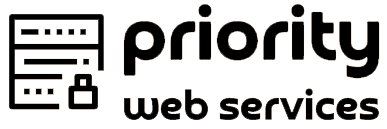Sharing is caring!
Top Security Advice for Your Website
1. Upgrade Your Website Protocol to HTTPS
You’ve probably noticed some websites having a padlock and green icon on the URL bar when you first access them. This means the sites have an SSL certificate and have activated an encryption protocol. An SSL encryption serves as an extra layer of protection by encrypting data as it shuffles between the server and the website. Enabling SSL encryption on your company website changes your HTTP web protocol to HTTPS, thereby providing a secure connection for visitors.
2. Use a Web Application Firewall Solution
A web application firewall helps protect the web applications powering your website by filtering and monitoring the traffic between the web application and the internet. Additionally, a WAF filters out malicious traffic and protects the web application from attacks like SQL Injection, cross-site scripting (XSS), file inclusion, and more. By having a website firewall in place, you can screen all incoming traffic into your website and quickly identify traffic with harmful intent. A web application firewall can be network-based, host-based, or cloud-based.
3. Update Your Software
Software updates are not just a means of introducing new features. Manufacturers also roll out updates to close loopholes and fix bugs that have been discovered in previous versions. This means you can be vulnerable to bugs that have already been fixed when you don’t upgrade your website software.
4. Use Strong Passwords
Passwords are everything in online security. It’s hard to believe, but people still include their date of birth, names of their children, and pet’s name as part of their password. Each of these combinations can easily be guessed by someone who does a little bit of digging. Don’t be that person. Instead, use strong passwords to secure your website by including combinations of different letters and numbers and special characters that are utterly random. If you have a hard time remembering your password, use a password manager. Step up your password game!
5. Restrict File Uploads
Depending on the functions your website performs for your customers, you might not be able to completely block uploads. However, try your best to limit uploads to files like images. Make sure users cannot execute files on your website even if they are able to upload. File uploads are one of the easiest ways to introduce malware into your server.




